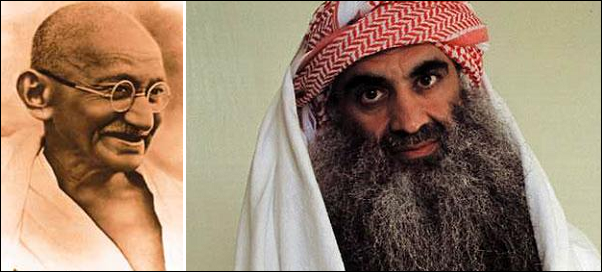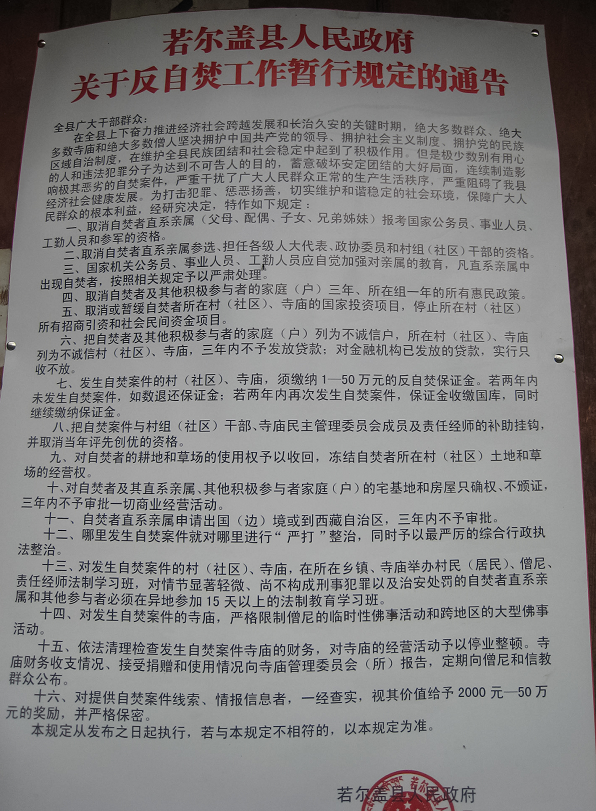Jottings 12: KSM’s “non-violence” refers to preaching, not fighting
Tuesday, February 18th, 2014[ by Charles Cameron — not an aha! but a d’oh! moment ]
.
This, from the Huffington Post last month:
The mastermind of the Sept. 11, 2001, terrorist attacks now says that the use of violence to spread Islam is forbidden by the Quran, a major shift away from the more militaristic view he had put forward previously.
Khalid Sheikh Mohammed’s thinking is detailed in a first-of-its-kind 36-page manifesto obtained by The Huffington Post. In a departure from his previous stance, which led the Guantanamo Bay prisoner to tell a military commission, “it would have been the greatest religious duty to fight you over your infidelity,” KSM, as he’s known in intelligence circles, instead seeks to convert the court to Islam through persuasion and theological reflection, going so far as to argue that “The Holy Quran forbids us to use force as a means ofconverting” and that reaching “truth and reality never comes by muscles and force but by using the mind and wisdom.”
I saw various versions of this tale — from the LA Times — Khalid Shaikh Mohammed issues ‘nonviolence’ manifesto:
The Koran, Mohammed wrote, “forbids us to use force as a means of converting” others, and “truth and reality never comes by muscles and force but by using the mind and wisdom.” Those statements clash with his earlier braggadocio in saying he plotted the Sept. 11 attacks and personally beheaded Wall Street Journal reporter Daniel Pearl, and in calling for young Muslims around the world to embrace violence.
— and from Andrew Cohen, explaining in The Atlantic why the manifesto may have been made available in the first place:
Perhaps the feds welcome Mohammed’s shifting interpretation of the Quran, which he now says prohibits violence as a means of spreading Islam.
However, I very much doubt that’s what’s going on.
**
The true meaning of KSM’s writing may be a little different from the reading given to it by the press. Here’s an actual quotation from the manifesto:
It is my religious duty in dealing with any non-Muslims to invite them to embrace Islam.
The Counter Jihad gets this bit right, I think, in a post titled KSM’s Prison Communiqués Part II: Wartime Religion of Peace Propaganda:
In point of fact, Islamic law teaches that, before waging offensive jihad, Muslims must first invite nonbelievers to accept the truth of Islam. Doctrinally, this summons to Islam is a necessary precondition to waging violent jihad. There are numerous examples of bin Laden and Zawahiri (bin Laden’s deputy and now the leader of al Qaeda) issuing public statements calling on infidels to accept Islam.
It’s a one-two sequence. Before engaging in acts of war, the jihadist must first make a peaceful and indeed graciously phrased invitation to convert to Islam… in the words of the Qur’an, 16.125:
Invite (all) to the Way of thy Lord with wisdom and beautiful preaching; and argue with them in ways that are best and most gracious: for thy Lord knoweth best, who have strayed from His Path, and who receive guidance. Q 16.125
**
The result, in the case of KSM’s manifesto, is an appeal that blends Murray Gell-Mann‘s quarks…
Everything that turns in the universe, from the smallest quarks to the largest supernovas are worshipping God, just as Muslims in Mecca circulate around the Kaba, counterclockwise. If you have Mecca TV channel just look for one hour how people from all around the world travel in circles like any electron or moon or earth or sun or any star or galaxy does. Try to record the picture for 15 minutes and then fast forward the picture then repeat it again, then ask yourself who told Abraham (PBUH) and these people a thousand years ago to imitate the laws of the Universe and nature. The answer will be He Who created these trillions of galaxies and human beings and made ?xed laws for all, but granted humans free will in order to test them.
— with the fifth century AD Neoplatonism of Proclus Lycaeus:
Just as in the dialectic of love we start from sensuous beauties to rise until we encounter the unique principle of all beauty and all ideas, so the adepts of hieratic science take as their starting point the things of appearance and the sympathies they manifest among themselves and with the invisible powers. Observing that all things form a whole, they laid the foundations of hieratic science, wondering at the first realities and admiring in them the latest comers as well as the very first among beings; in heaven, terrestrial things according both to a causal and to a celestial mode and on earth heavenly things in a terrestrial state….
What other reason can we give for the fact that the heliotrope follows in its movement the movement of the sun and the selenotrope the movement of the moon, forming a procession within the limits of their power, behind the torches of the universe? For, in truth, each thing prays according to the rank it occupies in nature, and sings the praises of the leader of the divine series to which it belongs, a spiritual or rational or physical or sensuous praise; for the heliotrope moves to the extent that it is free to move, and in its rotation, if we could hear the sound of the air buffeted by its movement, we should be aware that it is a hymn to its king, such as it is within the power of a plant to sing…
**
Interestingly enough, KSM also quotes Matthew 5.44-45a:
But I say unto you, Love your enemies, bless them that curse you, do good to them that hate you, and pray for them which despitefully use you, and persecute you; That ye may be the children of your Father which is in heaven…
— and in a letter to Rory Green, a British Christian who had written inviting him to repentance and faith in Jesus Christ, he responds:
I appreciate your deep concern regarding my worldly and hereafter life … You asked me to repent from my sins. For your own information, I never stop.
**
Let’s just say, it pays to peer beneath the surface.







